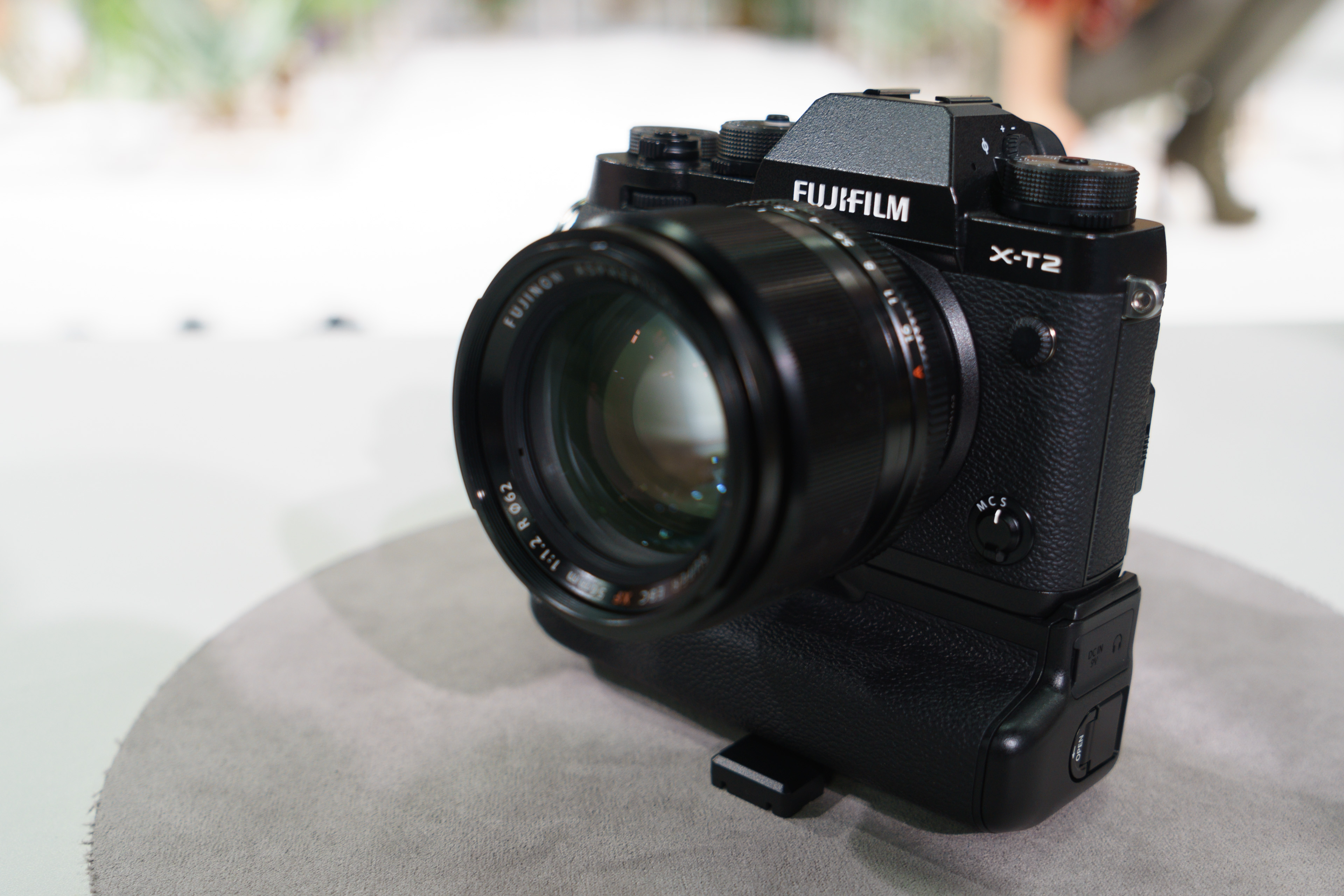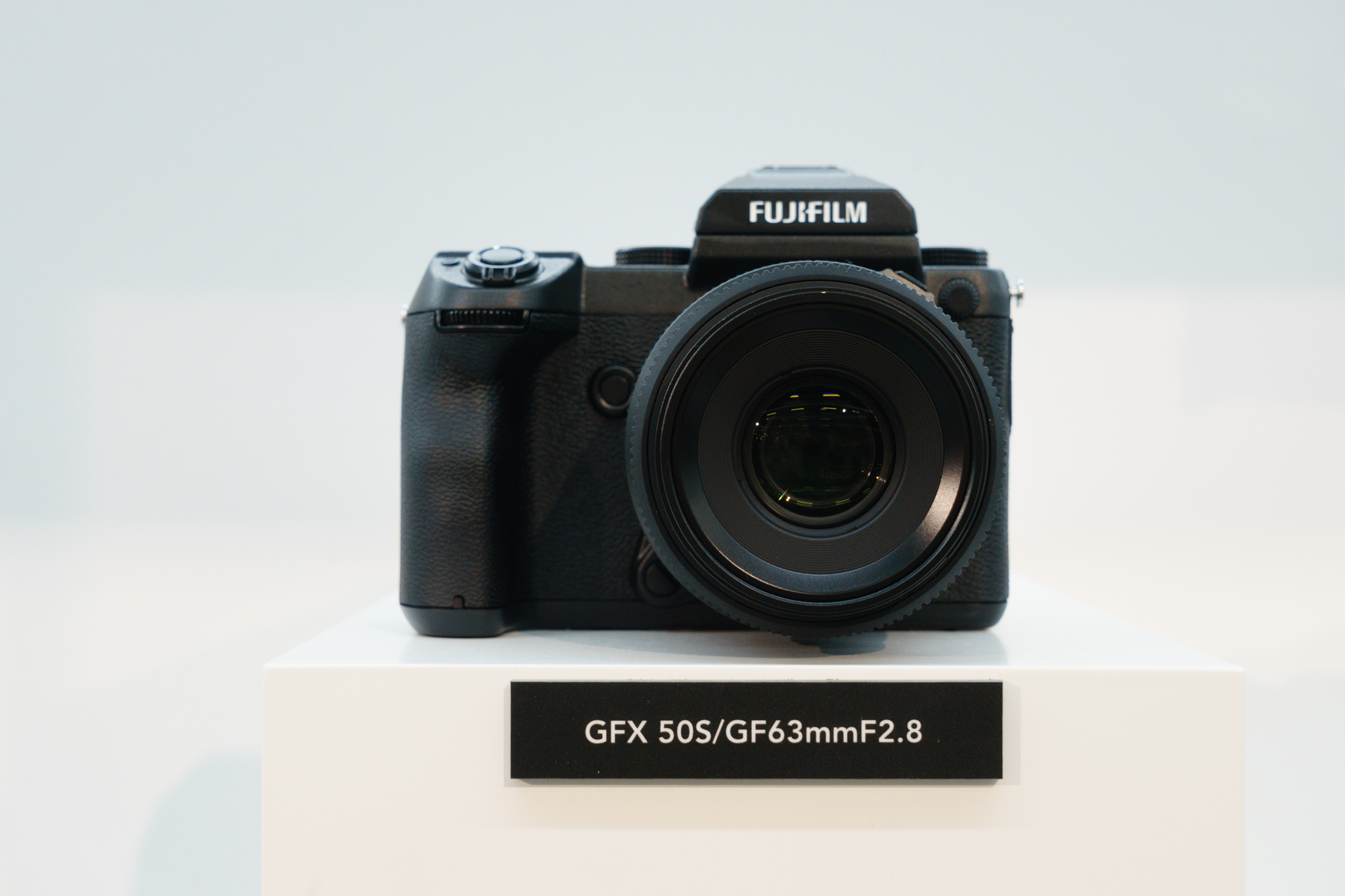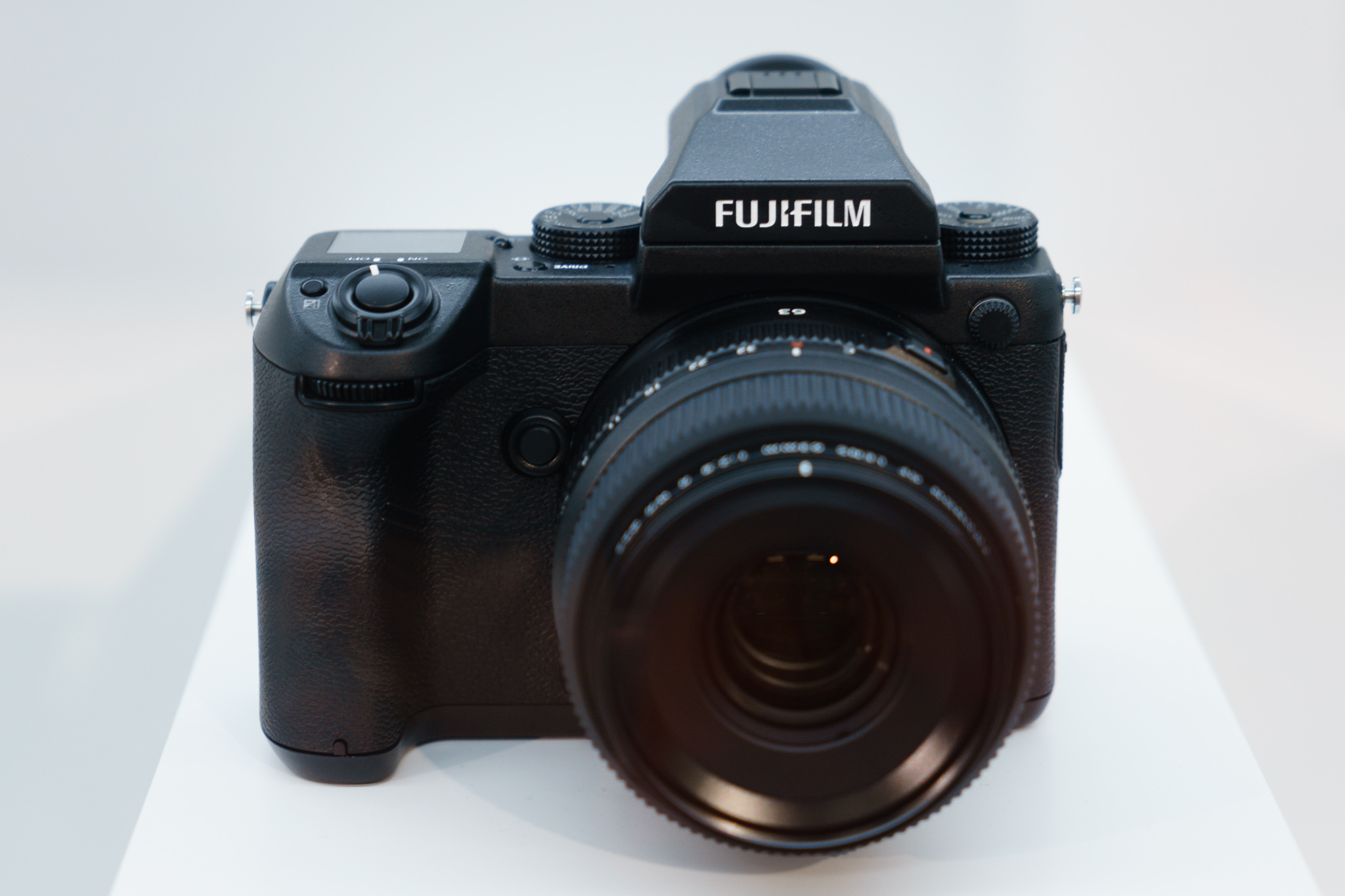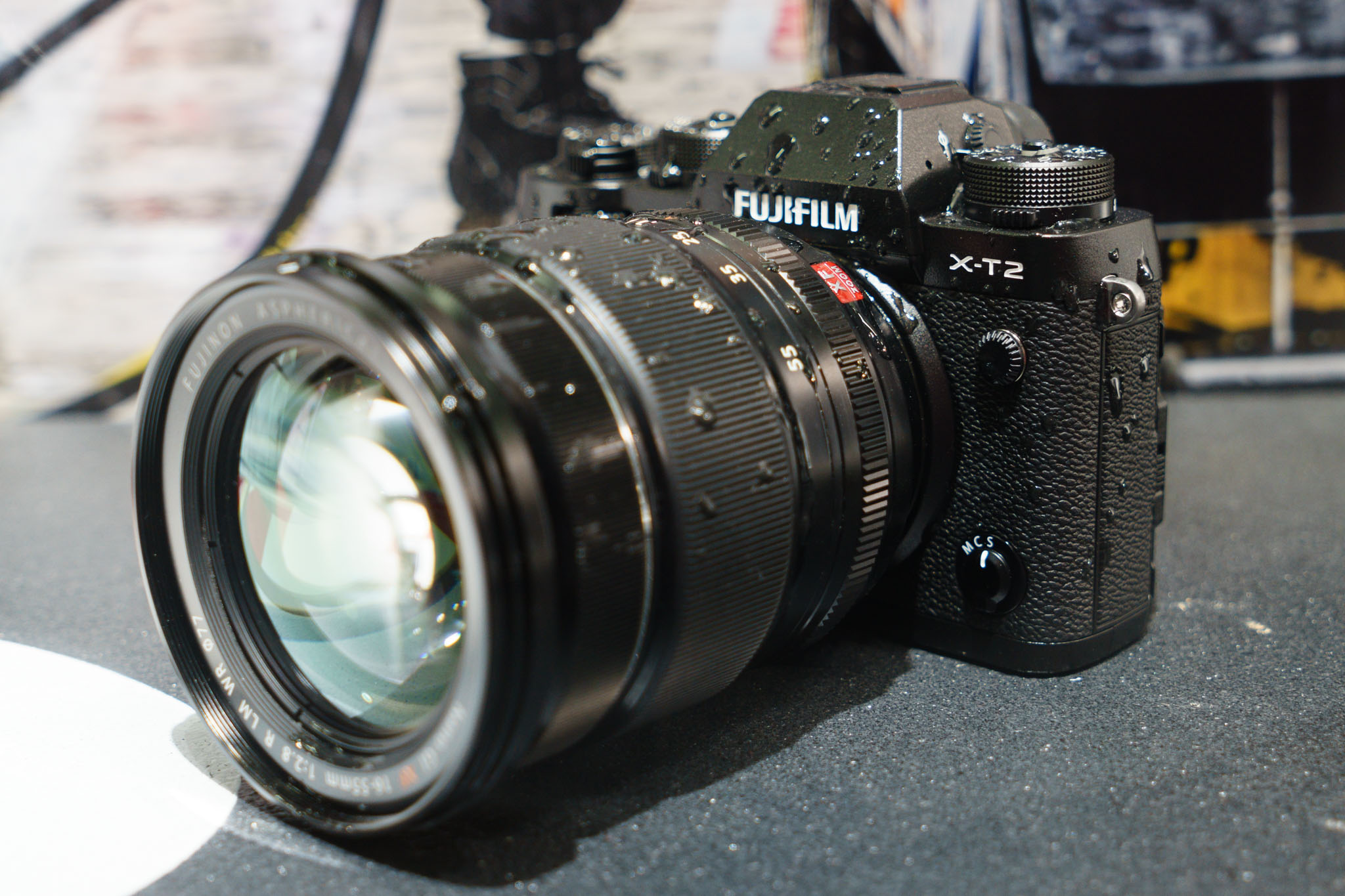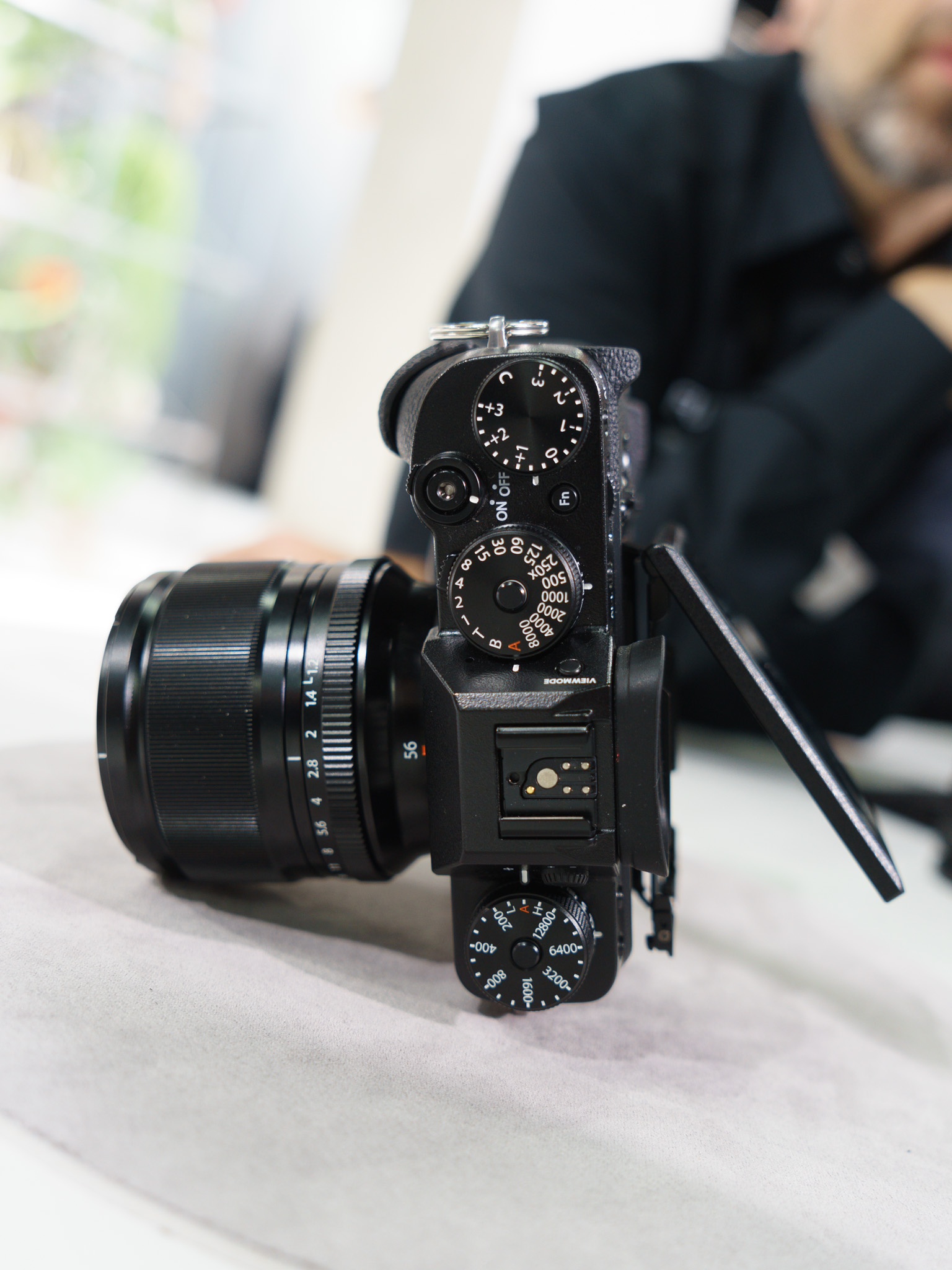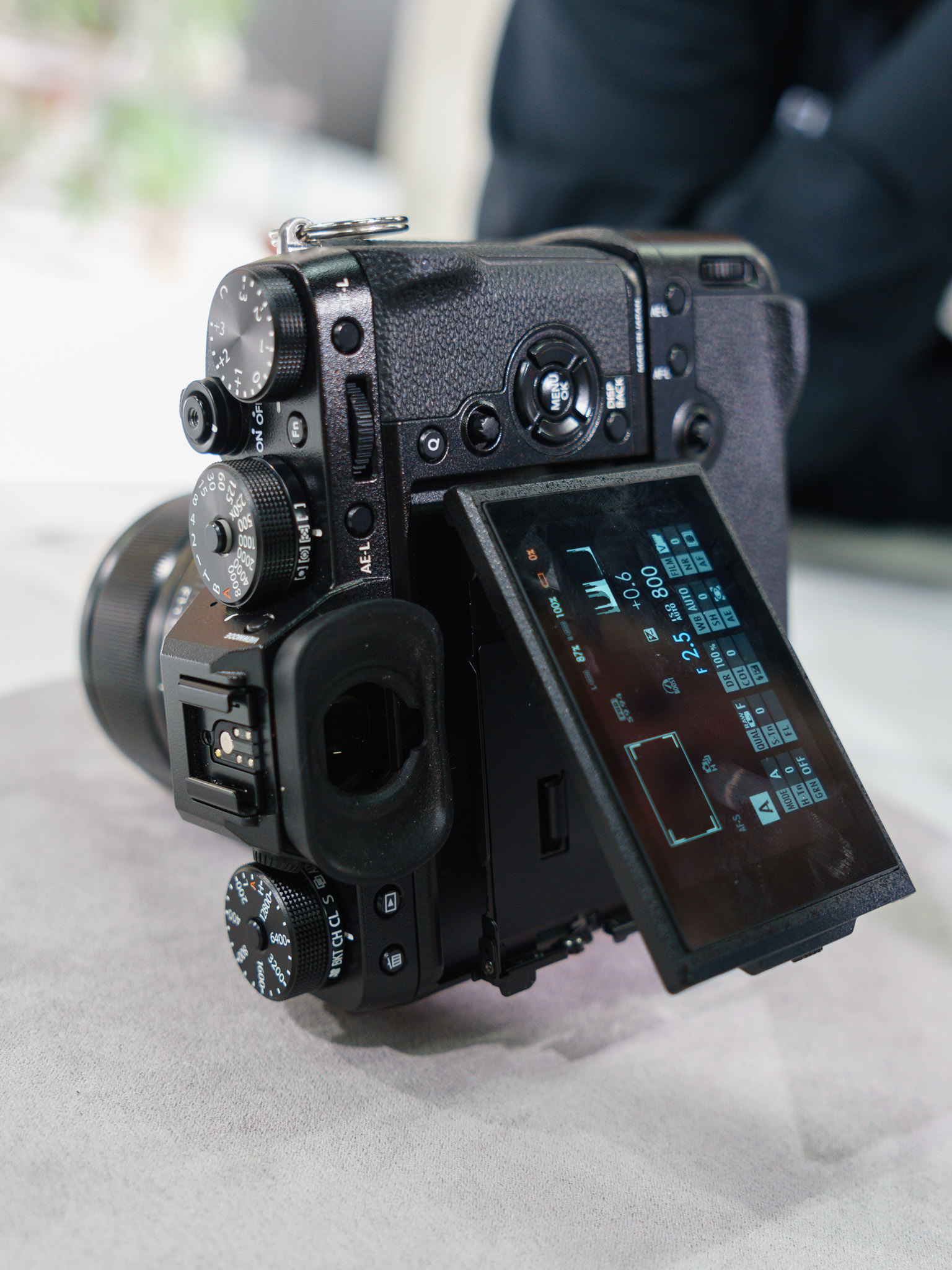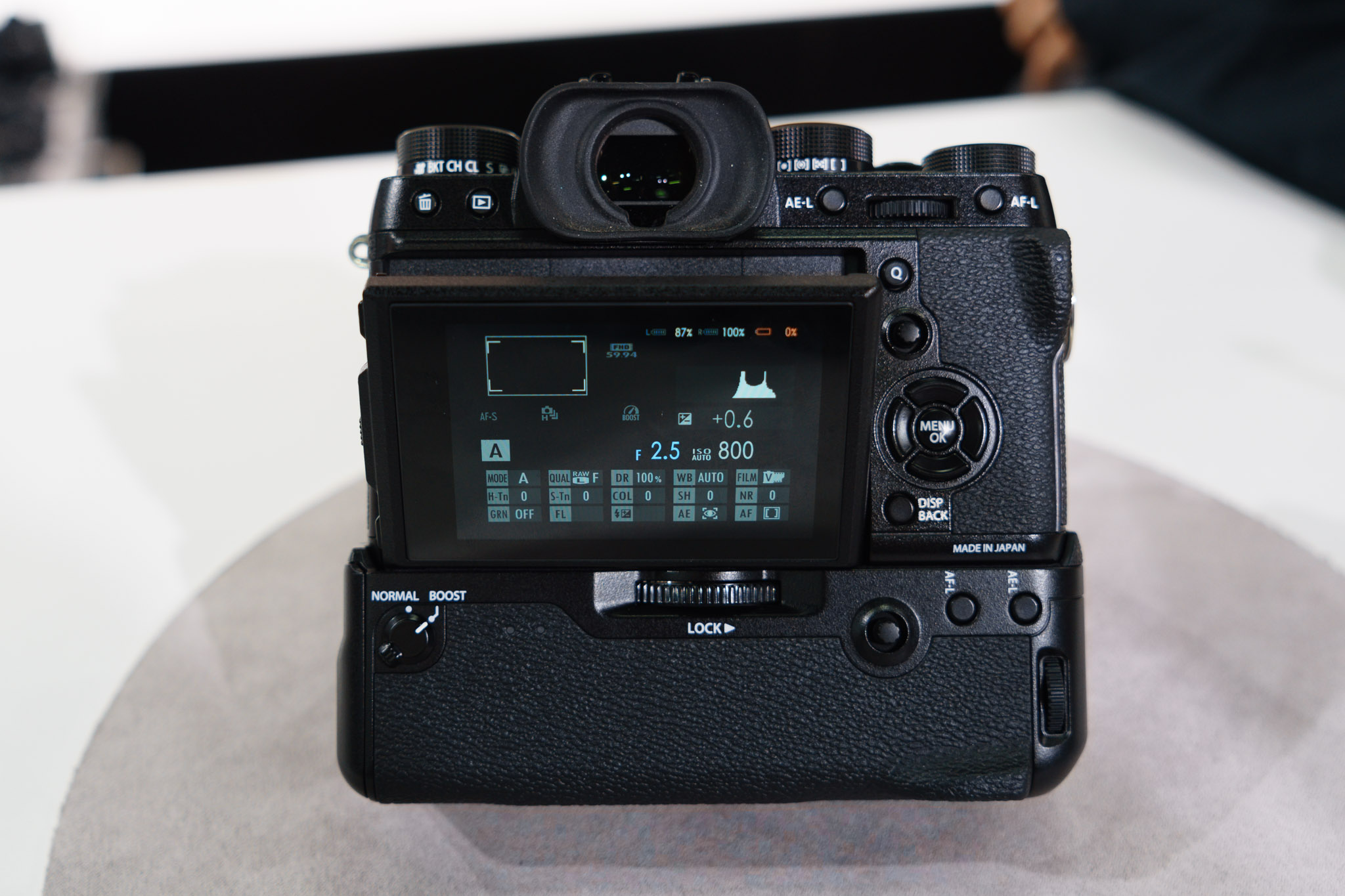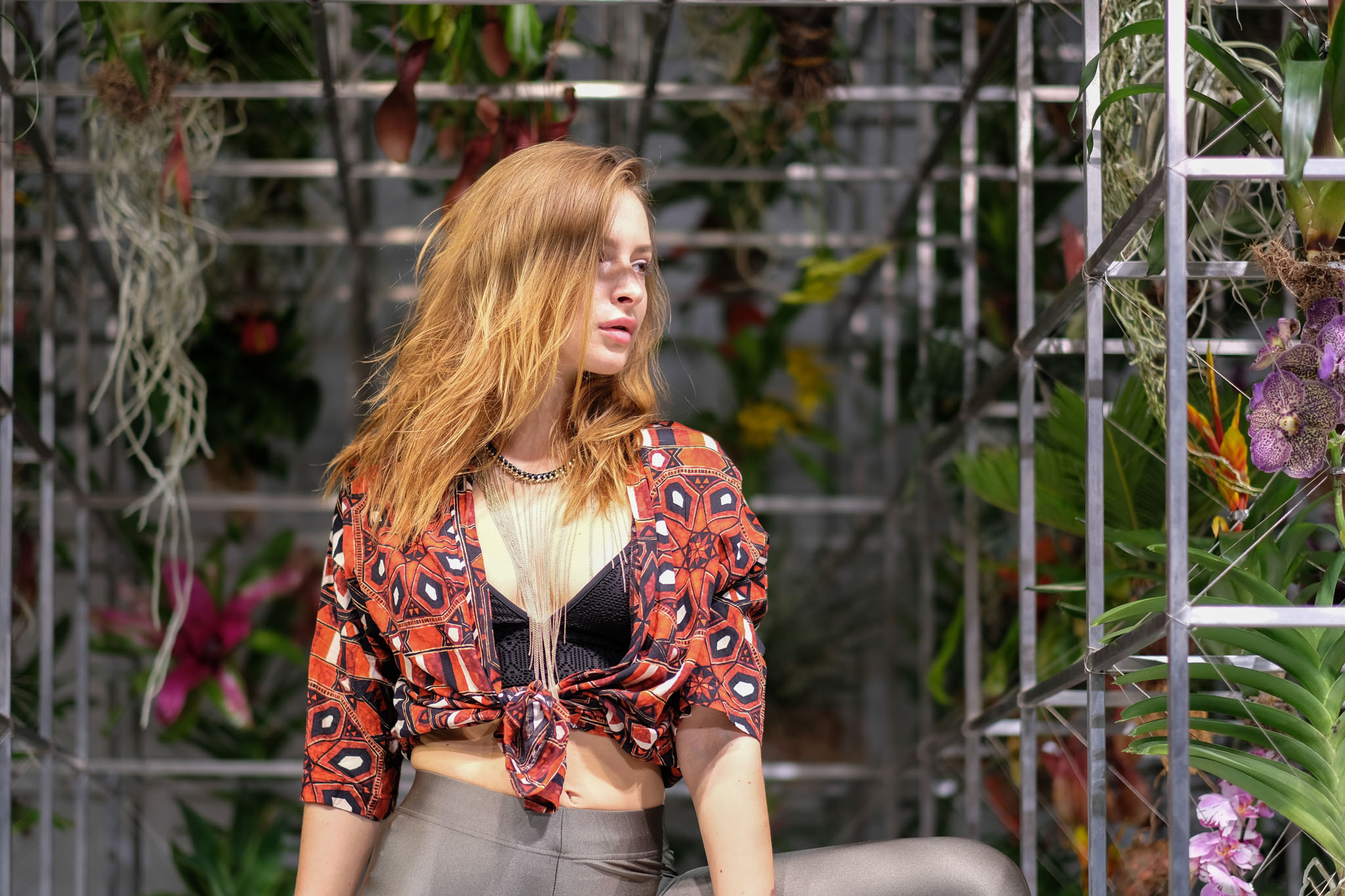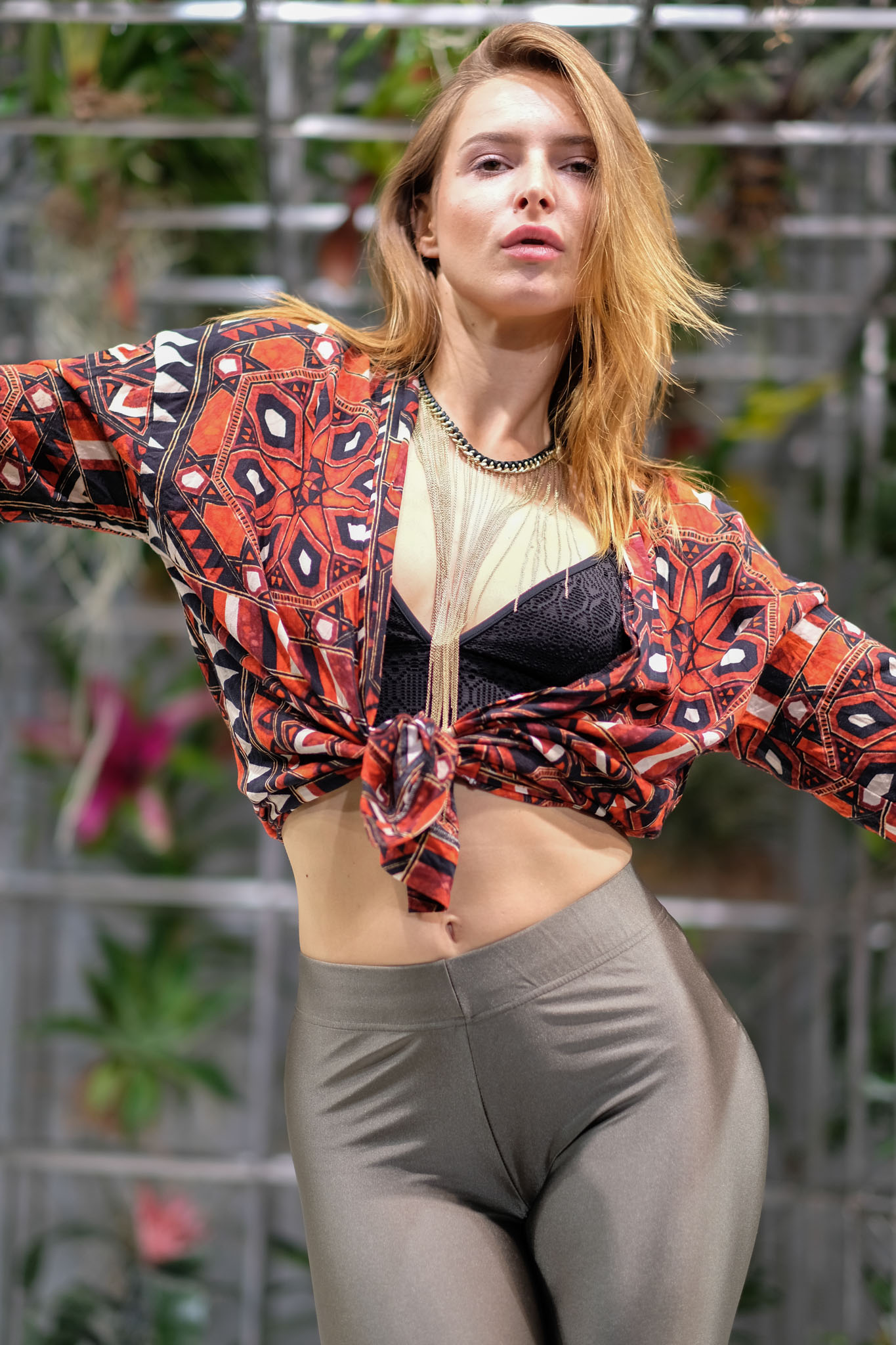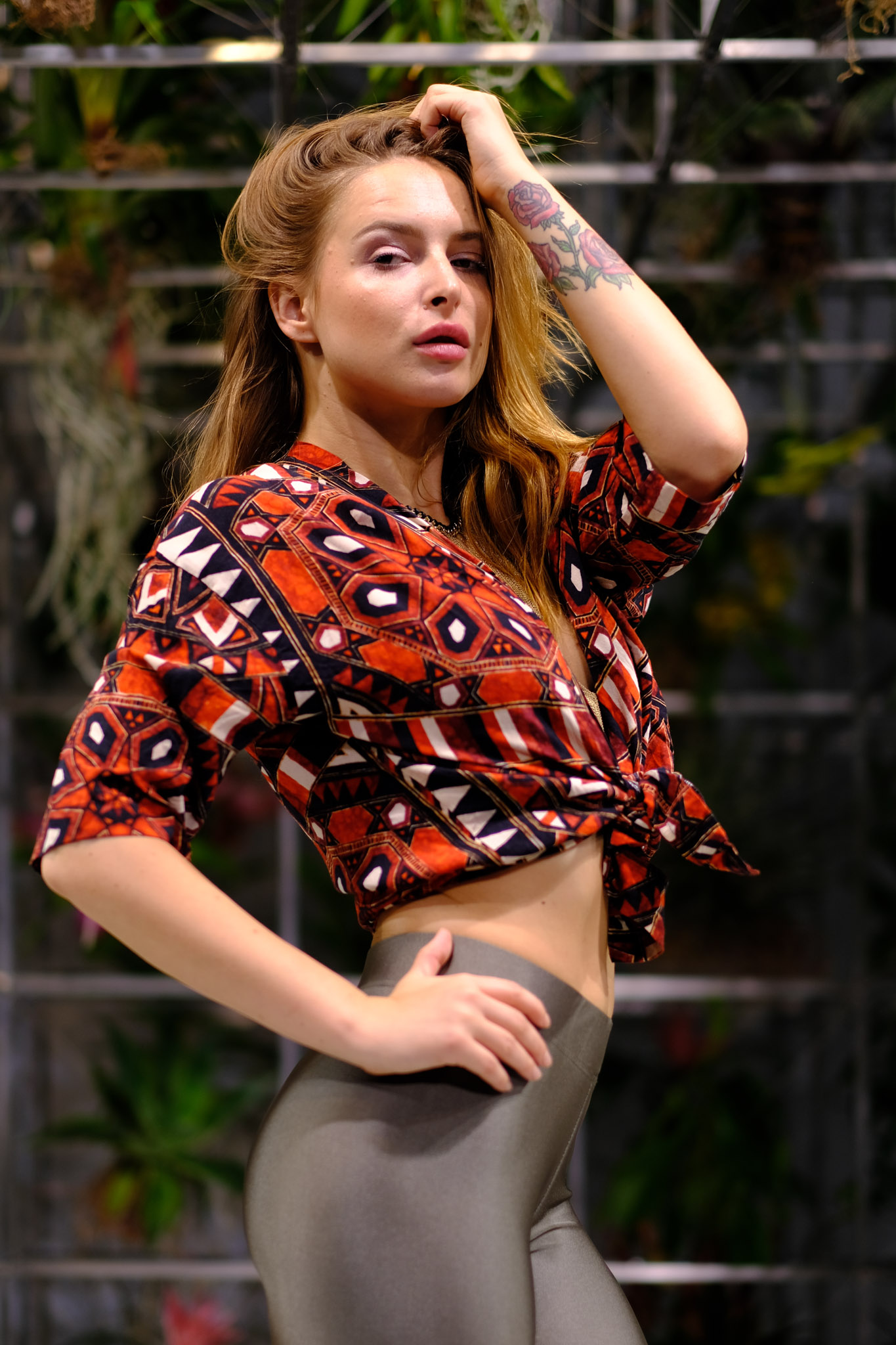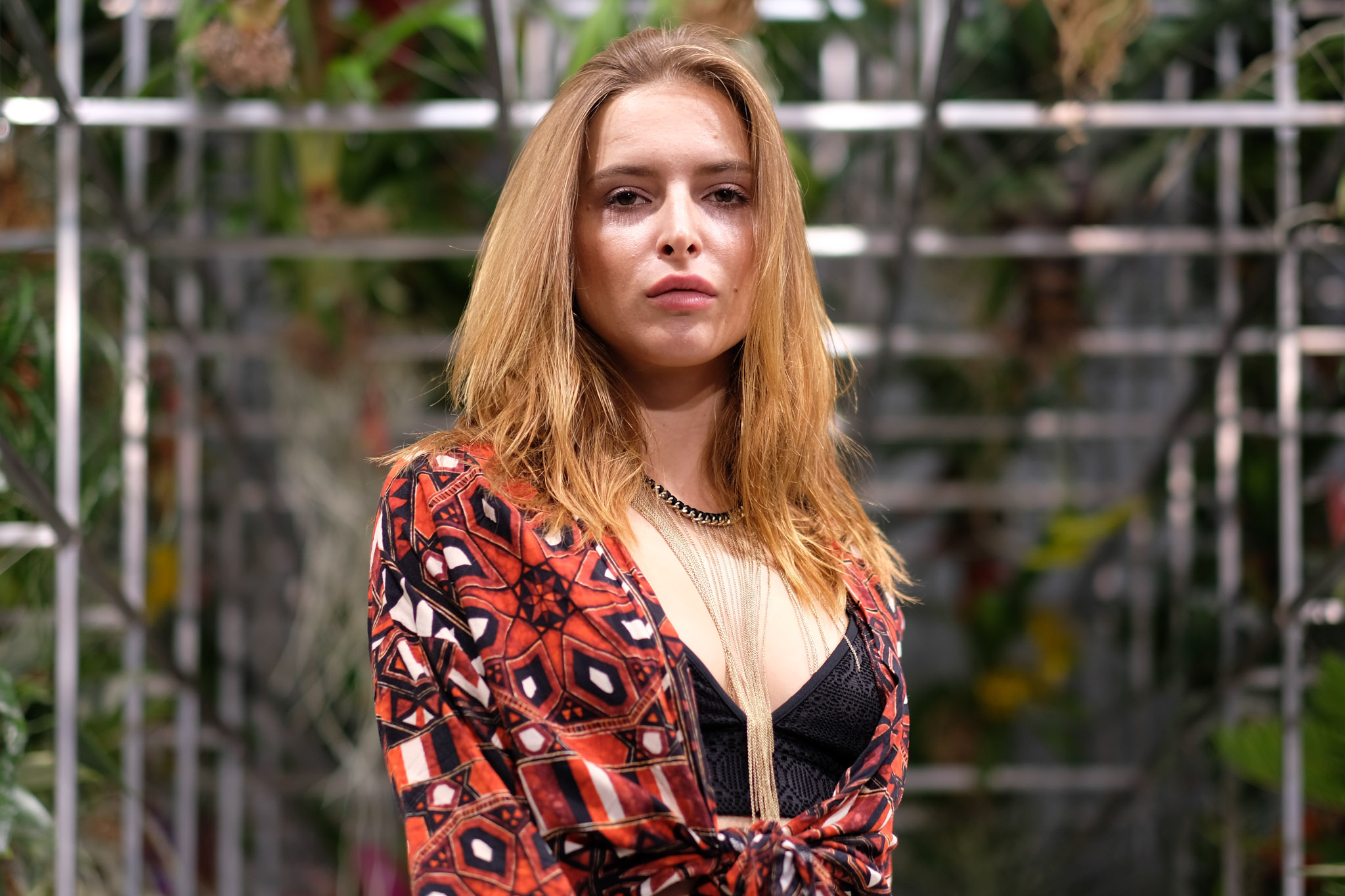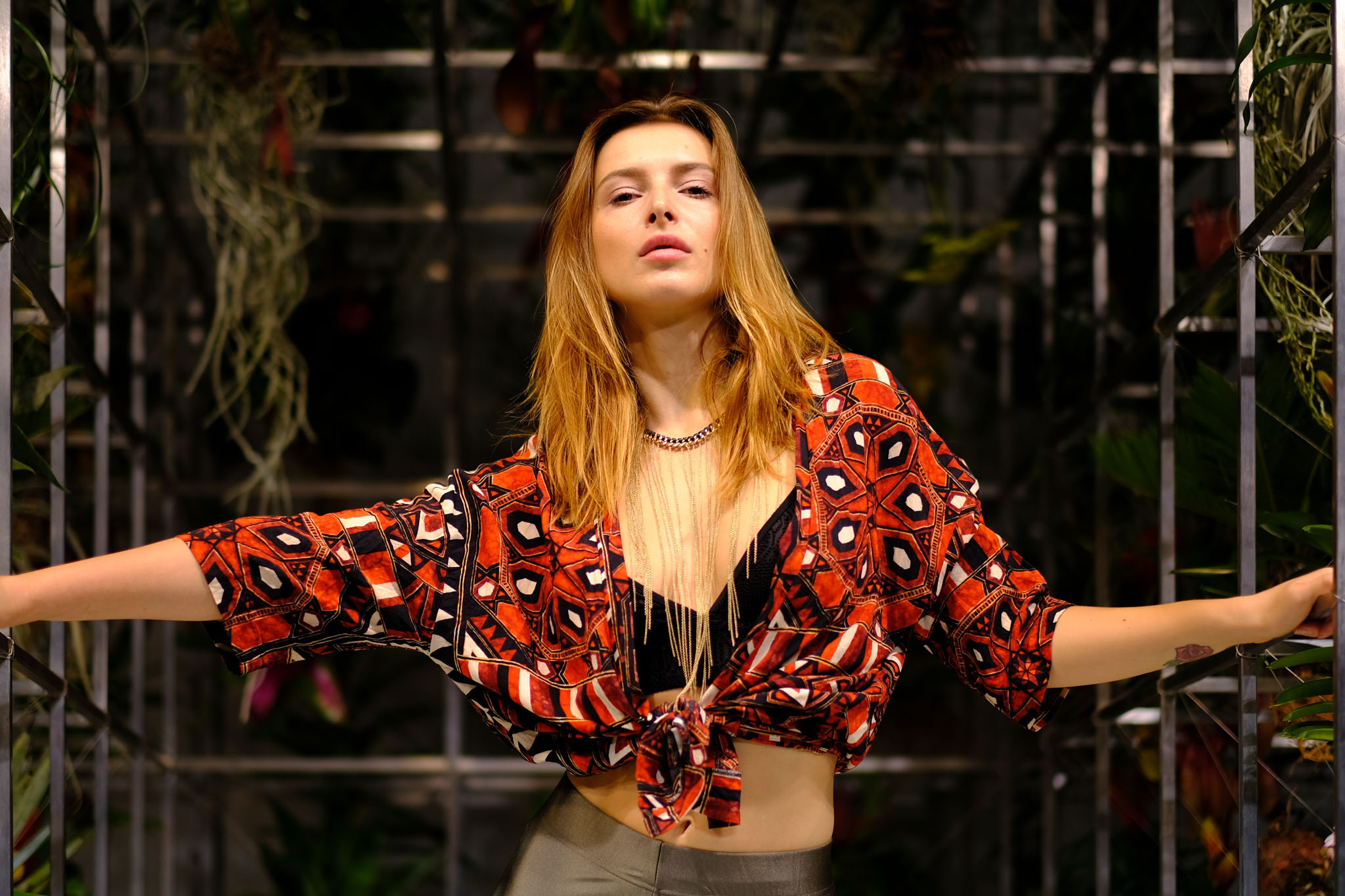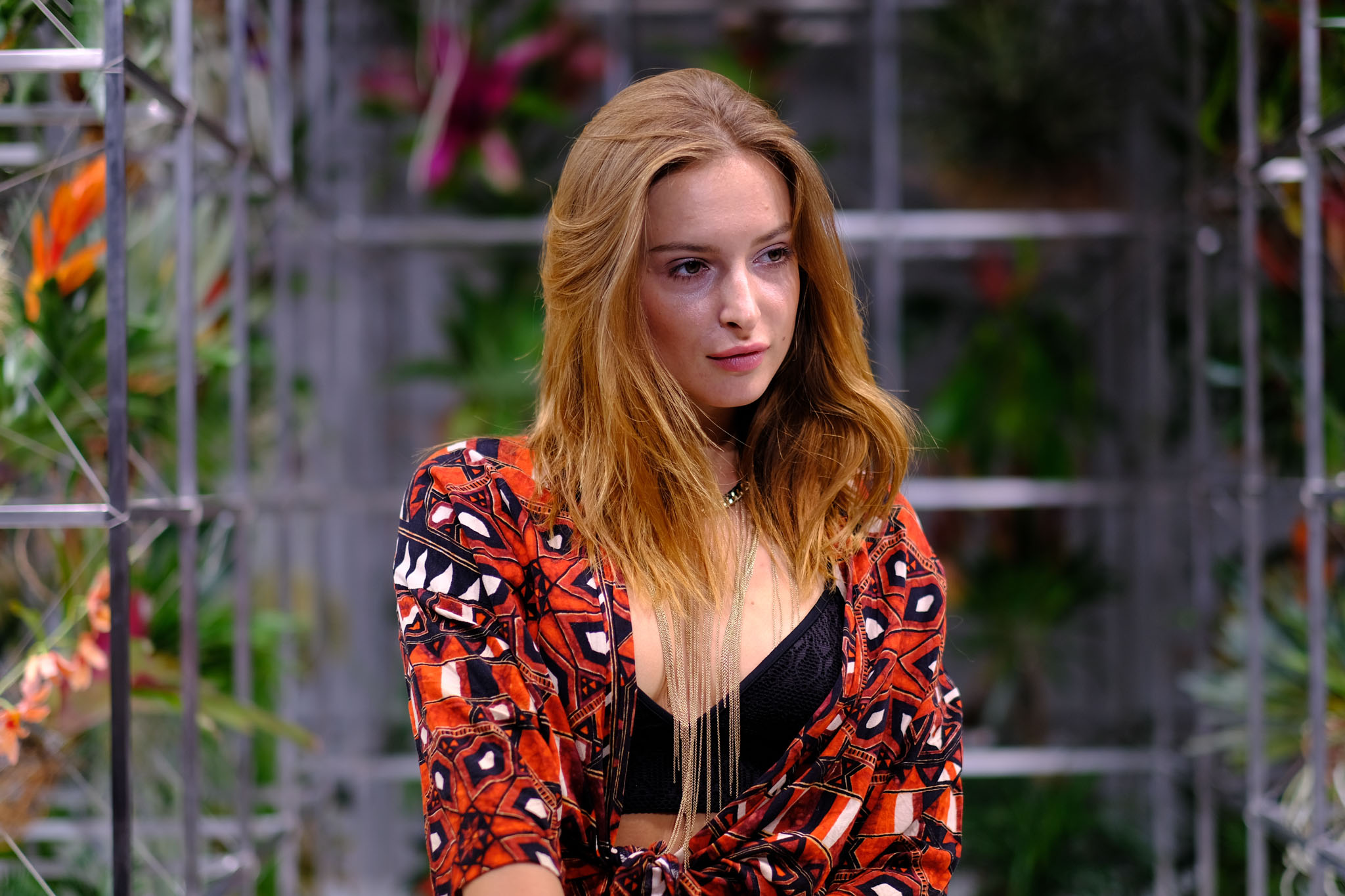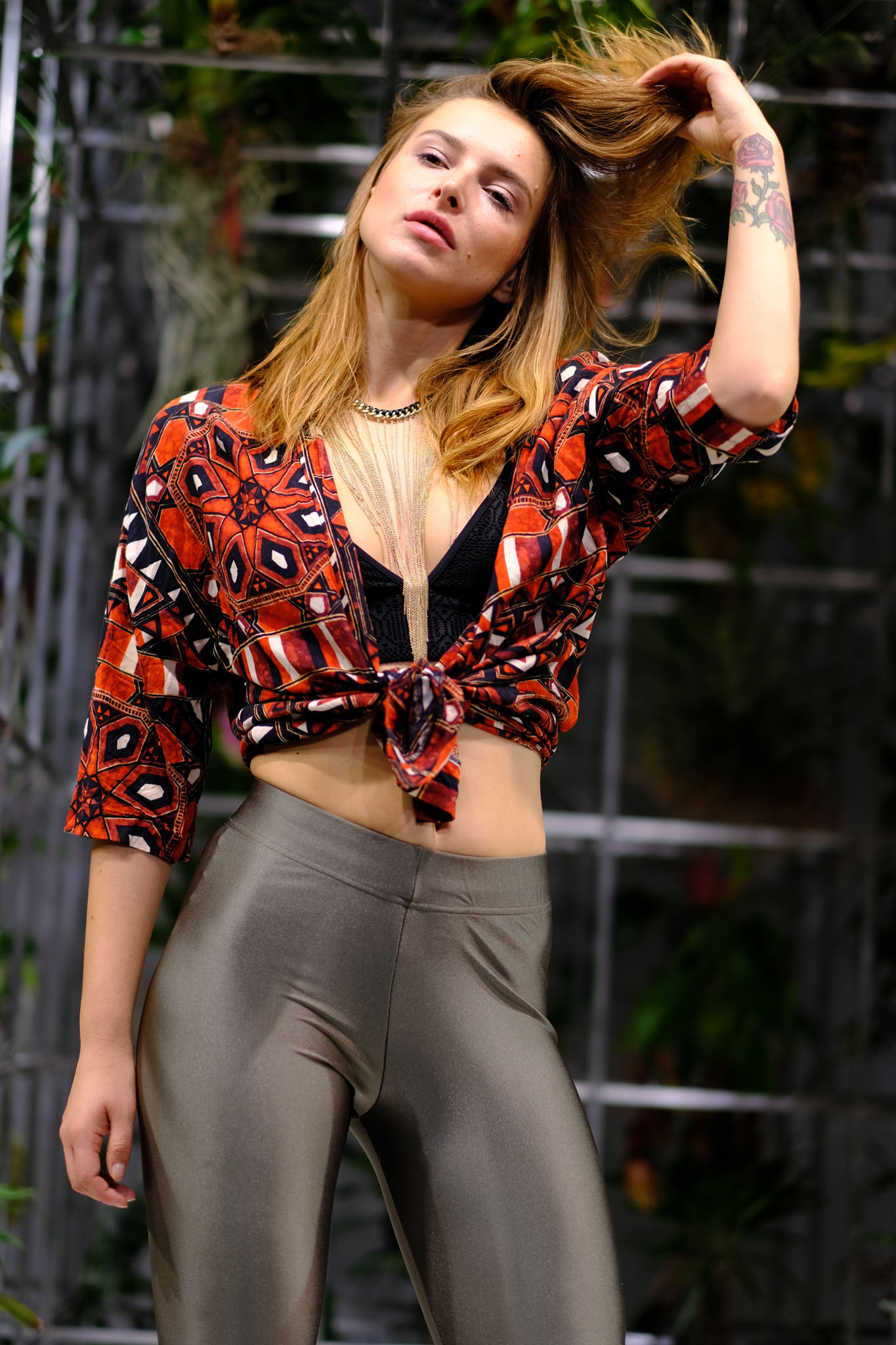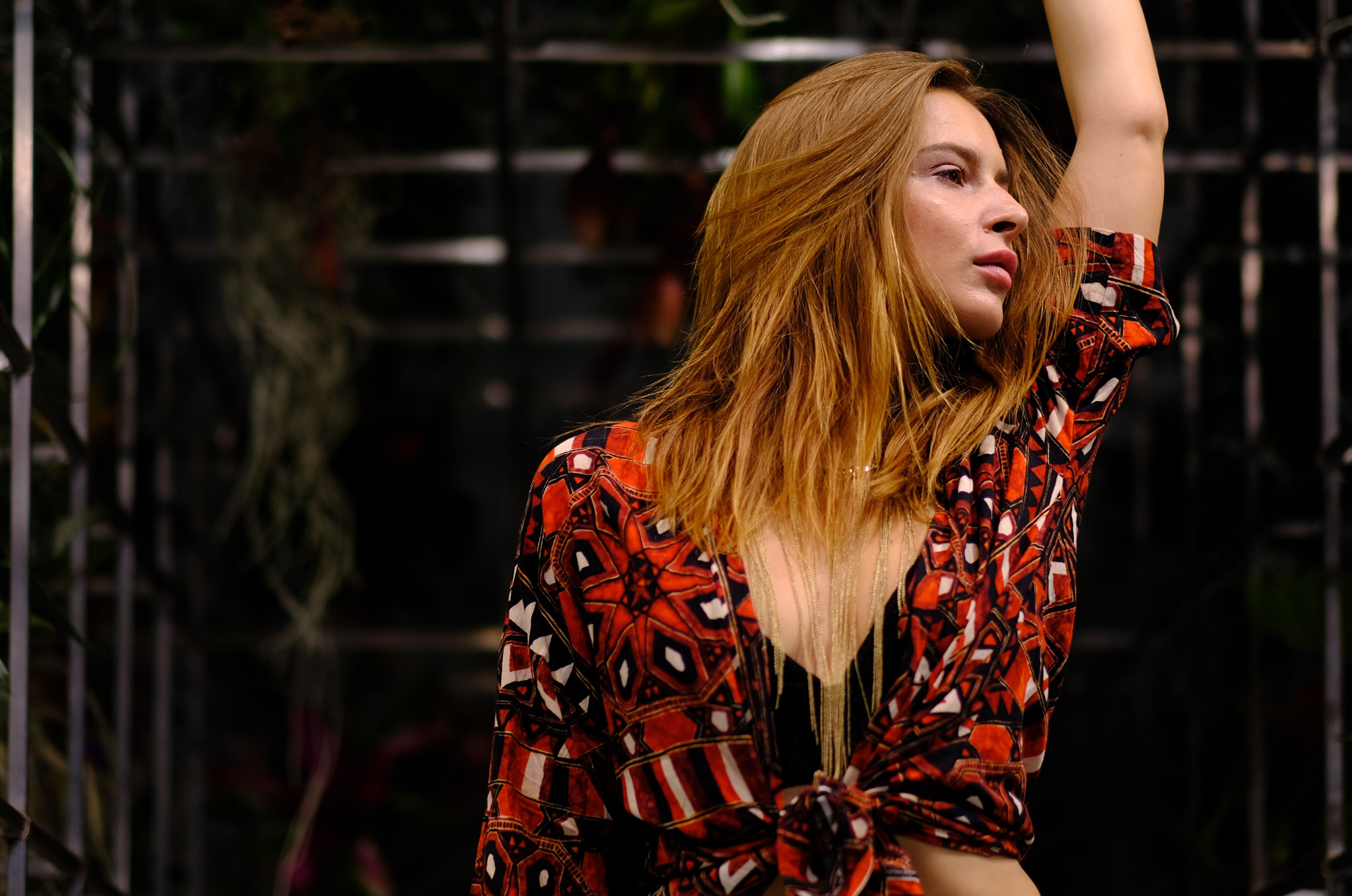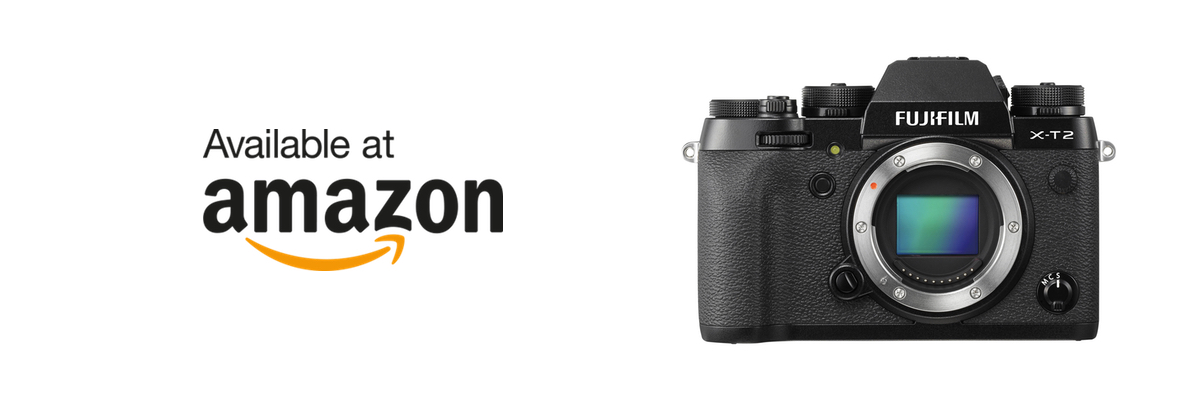Fuji has been pretty busy lately. The company made arguably the biggest splash at Photokina 2016 by announcing an entirely new Medium Format system, including the new GFX camera and an astonishing six lenses, to be released over the next few months.
The GFX was by far the most sought-after announcement at Photokina — after all, it’s not every day that you get to play with a 50-Megapixel Medium Format beast. Naturally, hands-on time was extremely limited, even more so considering the camera — yes, there was only one — is still a pre-production unit.
Unfortunately I didn’t manage to get my hands on the GFX, but for what it’s worth, it looks like an impressive system. It’s certainly bigger and bulkier than Hasselblad’s new X1D camera, but it remains roughly the same size as a Canon 5D-series body, which is a remarkable achievement. If Fuji’s price claims — well under $10k for the GFX body with one lens — end up being true, it will also be significantly more affordable than the rest of its Medium Format competitors, including the aforementioned X1D.
In fact, the GFX has the potential to be the camera that turns Medium Format digital photography into a feasible option for a wider range of professional photographers, not just those operating in extremely high-end, niche areas. It’s exciting.
However the situation plays out, Medium Format mirrorless systems appear to be here to stay. For now, both Hasselblad’s and Fujifilm’s offerings have their fair share of strengths and weaknesses, so we’ll see which one resonates more with prospective customers. The game is most definitely on.
♢
Now, Fuji may have captured the attention of many eyeballs at Photokina with the GFX, but the real star of their hands-on area was, of course, the recently announced X-T2. As the new flagship of Fuji’s widely acclaimed X-series system, the X-T2 fixes many of the shortcomings of the original X-T1 while staying true to its essence. I had a chance to shoot with it for a while, as well as to chat about it at length with Fujifilm employee Peter Fauland, and I have to say I came away very impressed. If you want to listen to my conversation with Peter, check out this special episode of Candid, which was recorded on location at Photokina. And now, let’s take a closer look at the camera.
Fujifilm employee Peter Fauland was kind enough to show me the new Fuji X-T2 and helped me test some of its new features.
Design and build quality
The Fuji X-T2’s body is a joy to hold and use. It looks very similar to the X-T1’s, but it has improved ergonomics and controls. The grip is slightly more recessed now, making it more comfortable with longer lenses, and there’s a switch on the top of the ISO and mode dials that locks/unlocks their position with a single click, instead of having to keep pressure on the switch as you rotate the dial.
The new body also has a clever tilting screen that can be tilted in both landscape and portrait orientations. This allows you to compose overhead or ground-level shots with ease, and is more flexible than your typical tilting screen. It doesn’t have a selfie mode, though, which may limit the camera’s appeal as a video-blogging tool. Not that it matters much, though; the X-T2’s certainly appears to have set more ambitious goals for itself.
Finally, there’s now dual SD card slots, so you can always have a backup of your pictures at the ready. No more losing pictures because of a faulty card. This is such a no-brainer feature that I can’t understand why some manufacturers — ahem, Sony — haven’t implemented it yet.
None of these differences are profound, or game-changing, but they didn’t need to be. The X-T1 was already an excellent body, and subtle improvements like these will make using the X-T2 even better.
Image quality and performance
The X-T2’s 24-megapixel X-Trans III sensor delivers stunning image quality, much like what we saw in the X-Pro 2 earlier in the year. Dynamic range is great for an APS-C sensor, and the RAW files are quite malleable in post-production. The extra resolution over the 16-MP X-T1 is very welcome, and should eliminate any concerns about using Fuji’s X-Series system as a serious work tool. You can definitely print big with this camera, and you should be covered for most types of commercial work: weddings, product photography, fashion… The X-T2 can do it all. As high-resolution sensors become mainstream it’s becoming clear that you don’t need a Medium Format or even a Full Frame camera to pull off these types of jobs anymore.
Of course, all of Fuji’s film simulation modes are built into the X-T2, including the stunning Acros. And with the dual SD card slots, you can configure the camera to write JPEGs to one card while writing RAW files to the other. Now there’s no excuse not to make use of the gorgeous JPEGs Fuji cameras are known for.
I played with these at Photokina for a while, and it’s tons of fun. The Provia profile worked wonders for people shots, even in lighting conditions as challenging as an indoor hall with a variety of different light sources, each of which had its very own color temperature. The camera did a great job setting the white balance, and the images came out looking rich, detailed, and with just the right amount of contrast. It wasn’t perfect — some isolated shots had a clear yellow cast — but overall, it was impressive.
For reference, here’s a few image samples I shot with the X-T2 at Photokina. All of these were shot as JPEGs and have only been cropped and resized. No further edits were applied.
As far as performance goes, the X-T2 is a two-part story. First there’s the body, which is capable of shooting at up to 8 fps with full AF capabilities. That’s not bad at all, but things get even more interesting when you attach the X-T2’s power boosting grip.
The grip doesn’t just extend battery life into DSLR territory — Fuji claims up to 1,000 shots on a single charge — but it also improves performance significantly. With it, the burst rate goes up to 11 fps and the refresh rate of the EVF goes up to 100 fps, up from an already very good 60 fps. This will not only help you track your subjects more accurately; it will also eliminate any flickering due to artificial lights, which dramatically improves usability indoors.
Another new feature in the X-T2 is the improved autofocus system, especially when it comes to subject tracking in C-AF. Fuji’s latest flagship has 5 different AF modes that allow you to fine-tune tracking behavior under several different circumstances, plus a sixth user-customizable mode. To make it easier to know which mode to use, each one is represented by a sample image in the menu. You can, for example, configure the camera to keep tracking the initial subject and ignore any obstacles. You can also tell it to look for accelerating/decelerating subjects. You can tell it to look for suddenly appearing subjects — which has a very descriptive picture of a skier jumping into the frame — or you can tell it to look for all kinds of erratic movements, a mode that Peter very aptly described as “total chaos”. The picture for that one is, fittingly, a tennis player during a match.
As far as I could tell during my brief testing, each of the new modes definitely changes the way the camera tracks motion, so this new AF system isn’t just a gimmick. The problem is, there’s a bit of a learning curve here, and it’s not always easy to know which mode is best suited to the task at hand despite the descriptive images. It took Peter and I over 15 minutes to get acceptable results in our two very simple test setups: sliding a water bottle in and out of view at moderate speed, with smooth left-to-right and back-to-front movements. We did get a fair amount of out of focus shots initially, but once we managed to find the appropriate mode for each case, tracking worked great. I would also expect the system to work better with people, especially faces. After all, a water bottle isn’t exactly the most exciting subject to track.
The point here is that the new AF tracking modes are a clear improvement, and they should bring the X-T2 to the front of the mirrorless pack when it comes to fast action shooting. They should also make it at least competitive with DSLRs, although to be fair, there’s still a bit of a gap here. It’s getting closer and closer with each new mirrorless generation, but for now, if shooting sports or similarly fast-paced action is your bread and butter, a high-end crop DSLR still looks like the best tool for the job. For those of us with more modest needs — just about everyone outside of professional sports shooters — the X-T2 should be more than enough to get the job done.
There’s also much to love about the X-T2 for video enthusiasts. The camera can now shoot 4K footage internally, and there are some great Fuji color profiles available for video, too. This has the potential to substantially reduce the amount of post-processing needed, and in fact most people will be able to get usable footage straight out of the camera. The X-T2 also has a new F-Log profile that greatly enhances dynamic range and that should makes color grading a lot easier. All in all, this is a solid offering, especially considering previous Fuji cameras have never been that great at video.
Overall, the X-T2 is an absolute powerhouse of a camera. In fact, the only omission I can think of is in-body image stabilization, something Fuji isn’t too keen on anyway. Fuji believes lens-based image stabilization to be a superior technology, and they’re sticking to it. Meanwhile, every other player in the industry is moving in the opposite direction, so we’ll see how this plays out in the end. For now, this doesn’t take much away from the X-T2 in practice; if their lens-based stabilization technology is good enough — and it is — then this is more of an academic debate than a practical one.
Parting thoughts
With the release of the X-T2, the Fuji X-Series system now represents everything I love about photography: great design, manageable size and weight, fantastic usability, awesome image quality, and a plethora of superb lenses to choose from. More importantly, it is a system designed by and for photographers, something that is easily noticeable upon spending just a few minutes with it.
It tempts me more than anything else out there.
As much as I love my Sony camera and my lenses, there’s just something missing there. They don’t feel like creative tools, more like exceptional technical instruments. They lack character, something Fuji cameras seem to have in spades.
Had I not committed to the Full Frame Sony system, picking up an X-T2 would be so easy. In fact, in some deep recess of my mind, I can see a version of myself that sells every piece of Sony kit he owns and puts the money towards the X-T2, the 16-55mm f/2.8 zoom, and the trio of 23mm f/2, 35mm f/2 and 56mm f/1.2 primes. He looks damn happy, and he would probably even come out ahead in terms of money. That version of myself haunts me every day.
But I guess commitments wouldn’t be called that if they were easy to make. Part of staying with a system for the long haul is learning to let go of passing temptations to switch. I still think the Sony E-mount system offers greater potential, and I hope it will be realized in the near future. A new Sony camera — be it the A7 III or the long-rumored A9 — with improved ergonomics and performance and dual SD card slots would go a long way towards easing my mind.
In the meantime, though, I can’t help but keep looking at the X-T2 and wonder… what if?
